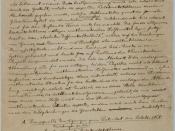In 1954 Maurice Allais, a French economist who would go on to win the Nobel prize, decided to observe and record the movements of a pendulum over a period of 30 days. Simultaneously, during one of his observations, a solar eclipse took place. Just as the moon passed between the sun and the earth, the pendulum began moving faster that expected.
Now known as the "Allais effect", it contradicts Einstein's theory of General Relativity - The modern explanation of how gravity works. This affect is so small, however, that it would take about a day for the apple to fall from a tree if it were the only gravitational effect acting upon it.
Ironically, the observations taken during a solar eclipse established General Relativity in the first place. Therefore, many scientists have tried to duplicate Allais' experiment. The results weren't equal, however, causing this to be an even bigger mystery.
Most explanations seem to have an effect too miniscule to be a major part of this phenomenon. It is still a possibility, however, that Einstein's theory of General Relativity is wrong.
There are still a few explanations, nevertheless, that attempt to explain the "Allais effect".
The first explanation is called Majorana. This theory states that large masses partially block the gravitational force from more distant objects. If this is correct, the moon can partially be blocking the gravitational effects of the sun from reaching the earth.
Another explanation is called MOND (short for MOdified Newtonian Dynamics) which suggests that at extremely low accelerations, gravity gets slightly stronger.
An even stranger theory is that the force of gravity is different at different directions. Most physicists dislike that one. It uses the concept of 'frames of reference', in which movement, acceleration, and so on are not uniform in...



Whoops
forgot to add this (bibliography):
Economist, The. "An invisible hand?." 19 Aug 2004. Economist.com. The Economist. 20 Aug 2004 <http://www.economist.com/science/PrinterFr iendly.cfm?Story_ID=3104321>.
3 out of 3 people found this comment useful.